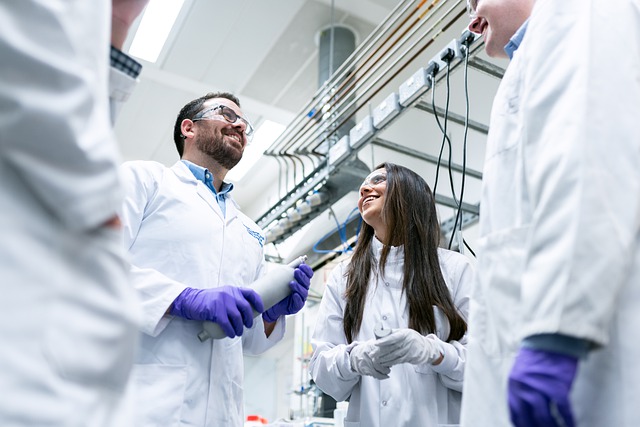THE BASICS OF GAS-LIQUID MIXING

INTRODUCTION
The idea of gases and liquids mixing is a bit strange and unfathomable for a large part. Nonetheless, it is a common everyday issue within the chemical laboratory circles. But just why would these two substances be mixed? And how possible is this in the first place?
We draft this article to answer these and many more pertinent questions. For one, liquids and gases are generally mixed to enable the transfer of mass. For instance, in the event of the air stripping, the gas may be used to eliminate volatiles from the liquids. Please read the explanations that follow for more insight.
THE BASICS OF GAS-LIQUID MIXING
Equipment Employed
For a large part, a packed column is the one that is extensively employed for this very purpose. The packed column plays the role of mixing the contents whereas the air pump that attaches to it generates the driving force. All the contents are later spewed into a tank to which an impeller is attached.
In the tank, the liquid and the gas are left exposed to each other for a longer duration of time. This prolonged exposure is what enables the two substances to mix completely. In the course of doing so, the dissolved masses that no longer need to be present are stripped off. These include the volatiles.
Basic Processes or Methodology
A typical liquid-gas mixing undertaking entails the dispersion of low-density compressible gas into a denser liquid. For the same to mix thoroughly, significant turbulence is often induced by the use of an impeller. Then, the mixture is left to stand in the tank for a prolonged duration of time to create the deeper contact needed for maximum outcomes.
In case the liquid contains some dissolved solids or volatiles, the heat transfer apparatus is generally employed. They eliminate the solids and the volatiles typically by inducing a mass transfer of the same to another container or collecting chamber afar off.
Applicability
This chemical process of mixing liquids with gases finds wide applicability in a range of chemical and industrial processes and settings. The cleansing parts, petrochemical industries, and the food production industries are the key users and beneficiaries of this technology. Here, it mainly serves the role of facilitating the various chemical reactions.
Likely Outcomes
Apart from the mixed liquids and gases, this process may also bring along some adverse side effects. These include corrosion, burning, scalding, and the poisoning of the human agents. You are hence supposed to take every precaution to see to it that you keep a safe distance if you run these machines.
CONCLUSION
Our round-up of the basics of the gas-liquid mixing comes to an end there. We now expect you to do a great job of not only appreciating the entire exercise but also taking the necessary steps to implement it on your own. How about you share the piece of insight with the others that need it as well? You definitely want them to gain the necessary utility as well, don’t you?
References:
https://en.wikipedia.org/wiki/Mixing_(process_engineering)#Liquid%E2%80%93gas_mixing
https://www.sciencedirect.com/science/article/pii/S0894177718305259